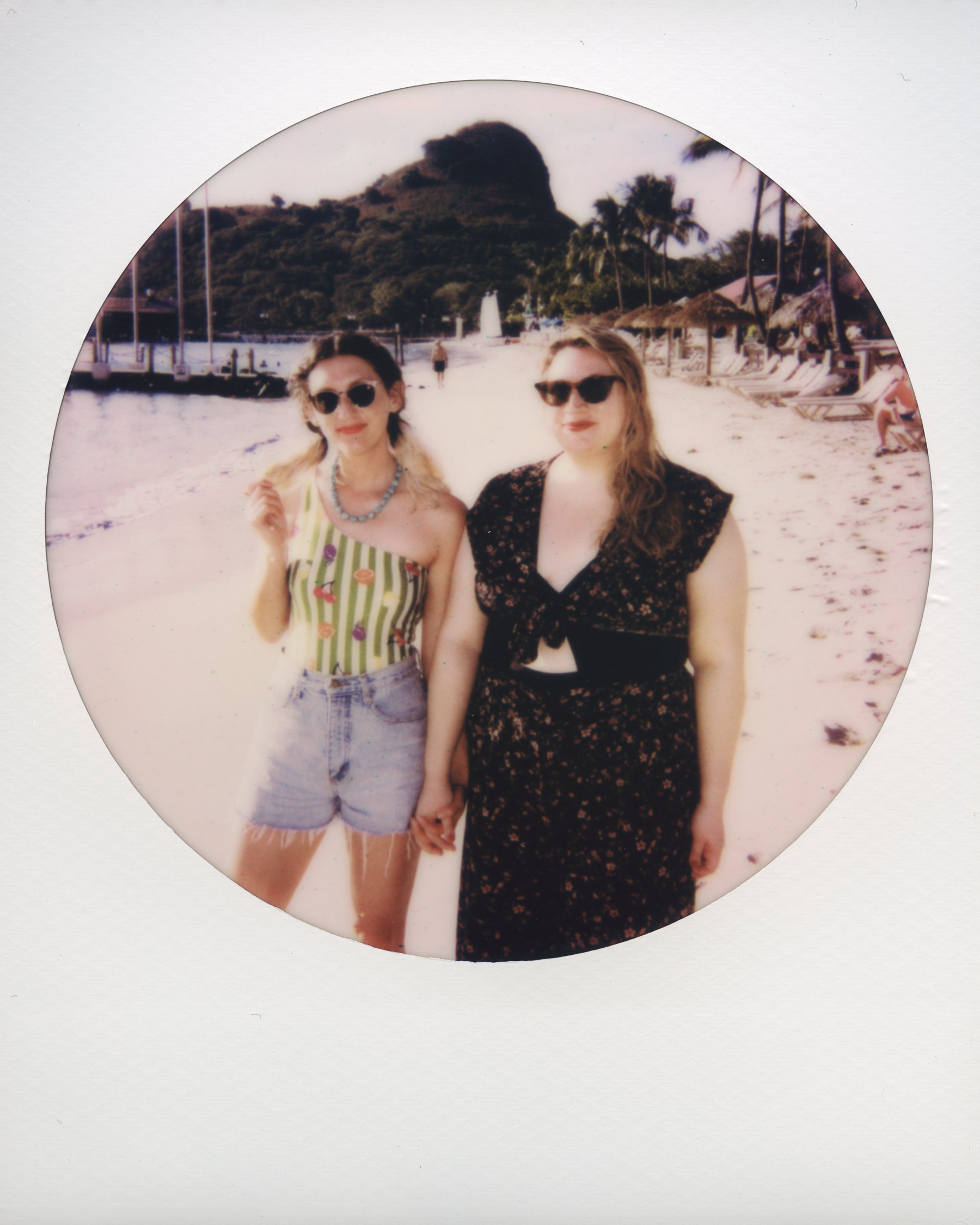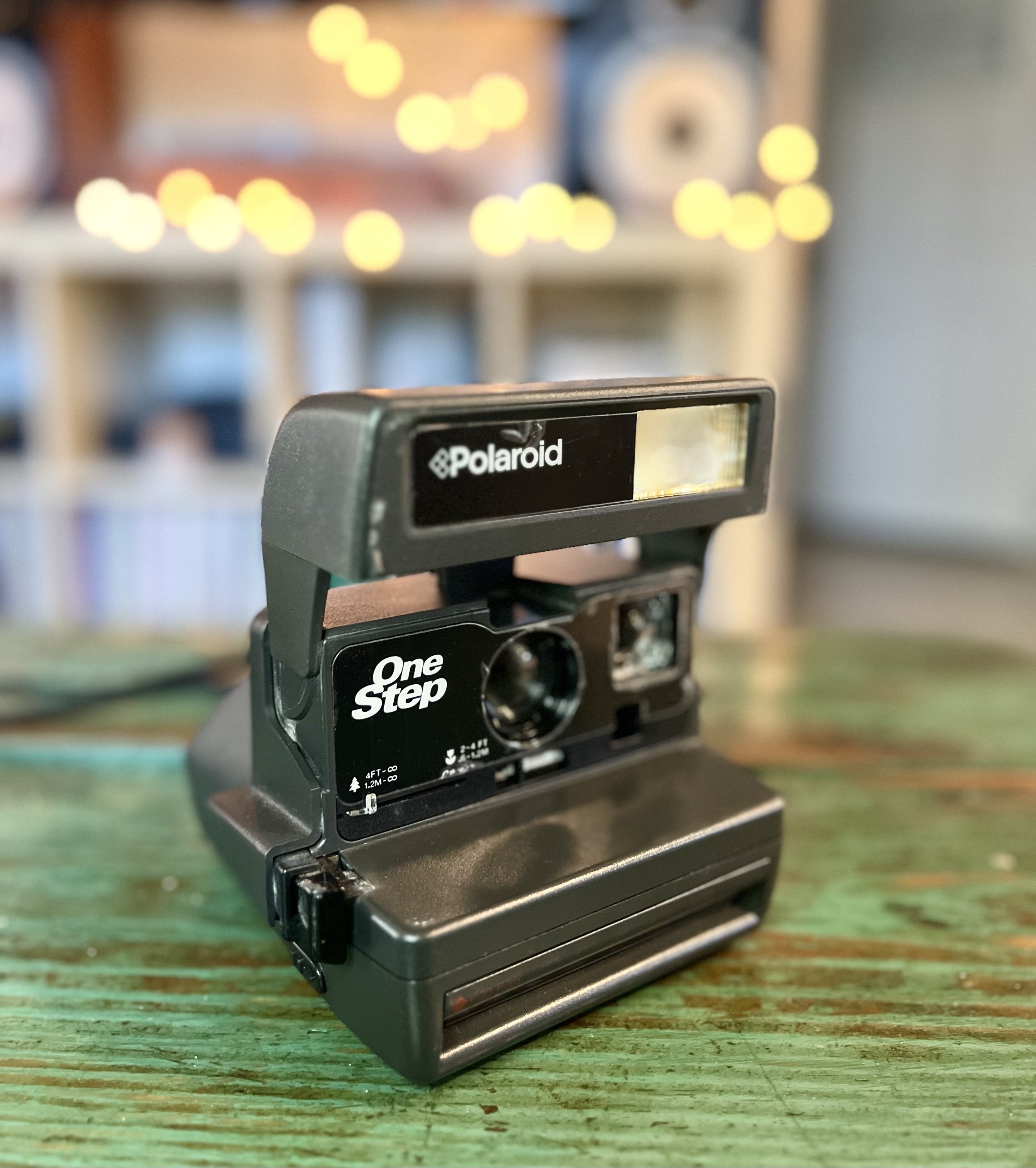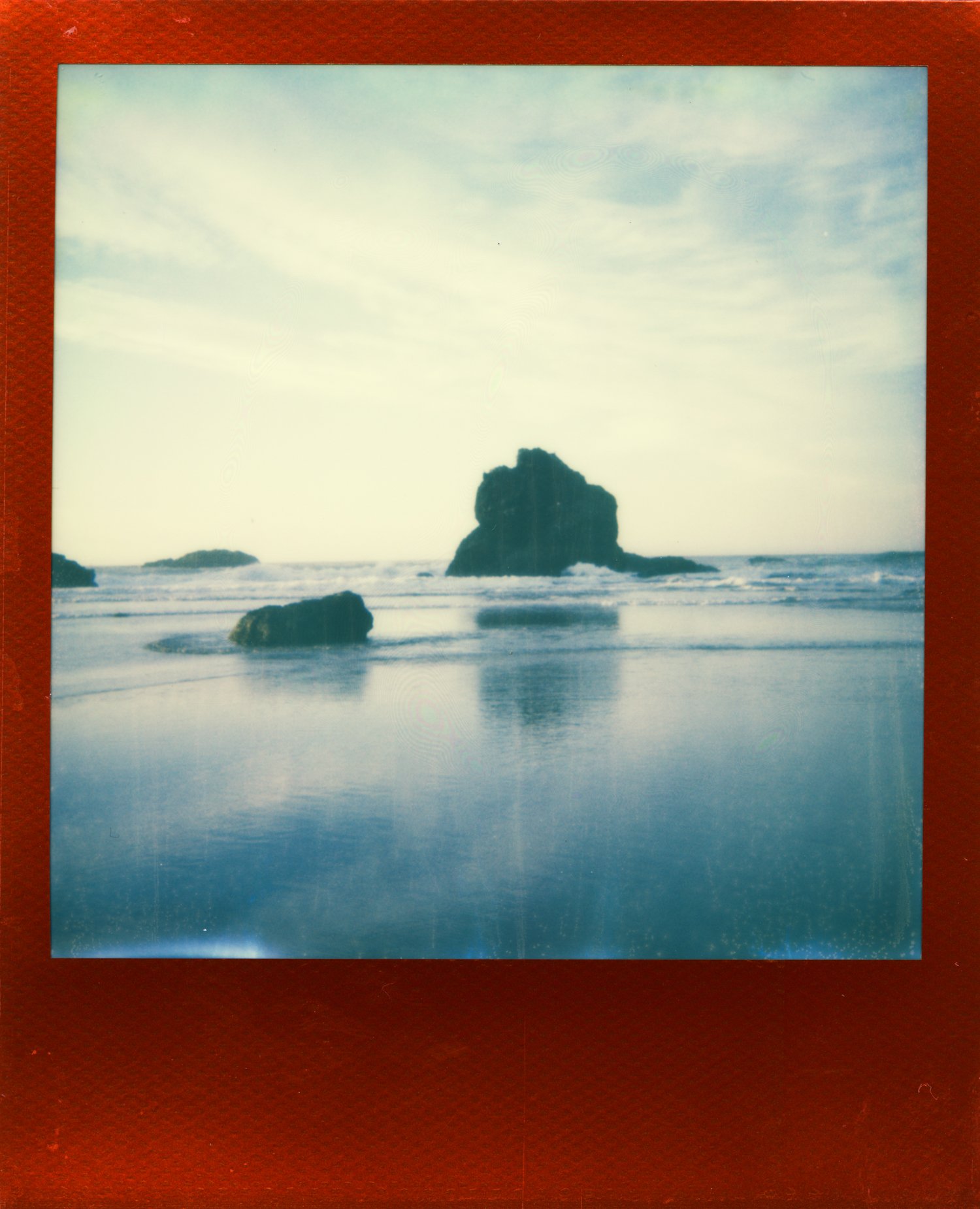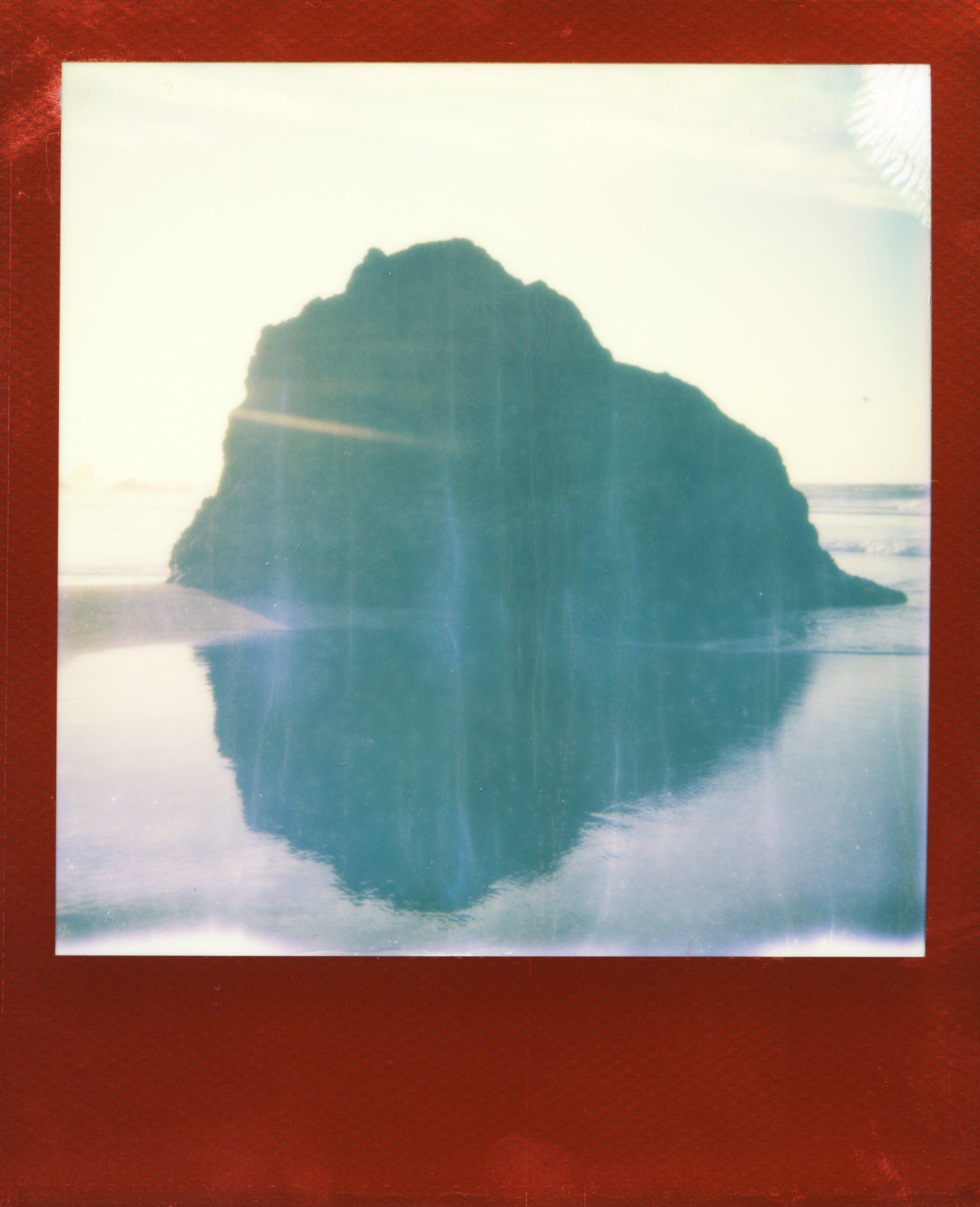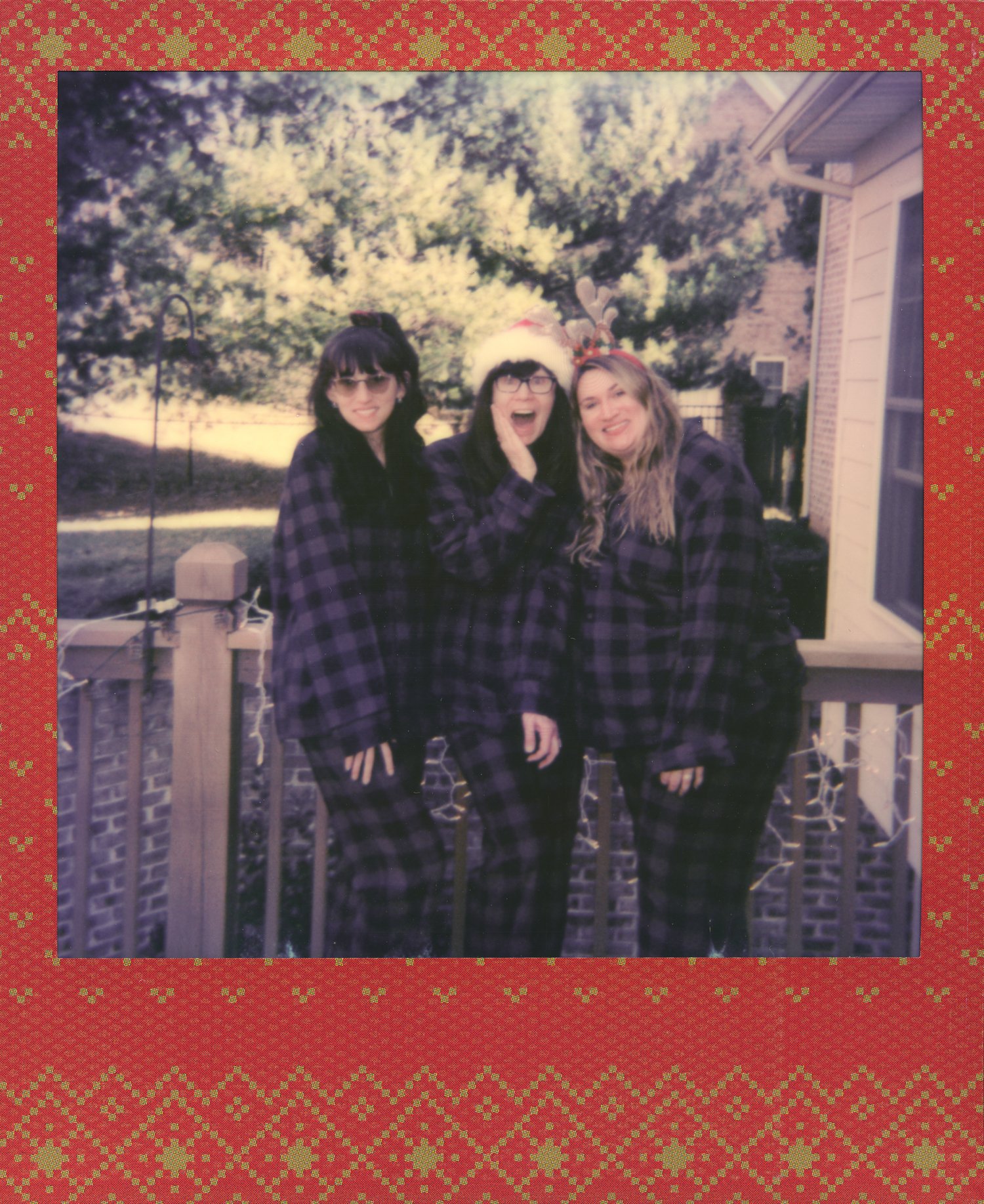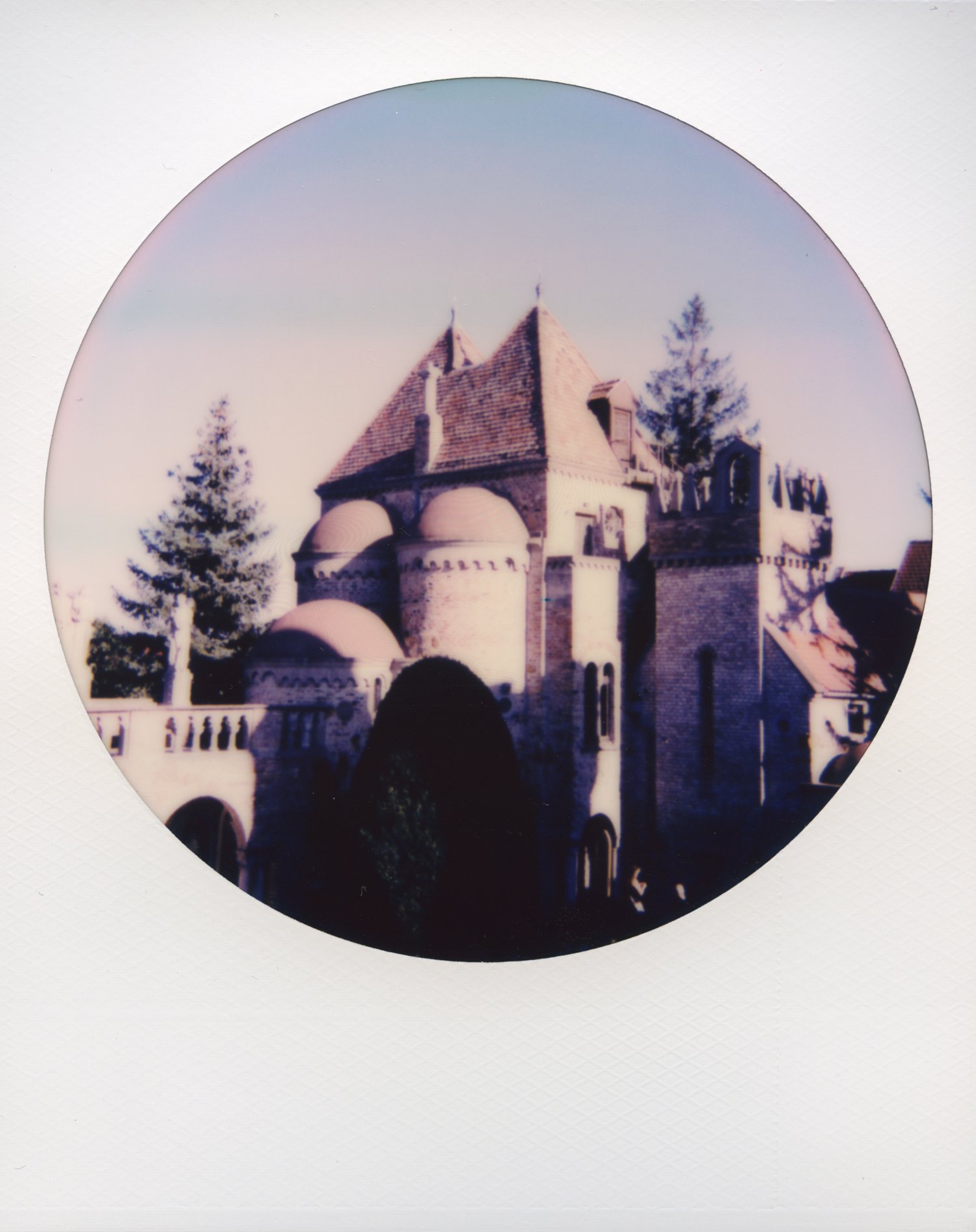This post contains affiliate links and I will be compensated if you make a purchase after clicking through my links.
I have SO MANY vintage Polaroid 600 cameras. I’m not really sure how it happened, but I’m running out of space to store them! I’ve thought about selling a few but I’m so obsessed with the way they each look that I couldn’t bear to give them away. Polaroid cameras have such a retro look to them and it’s rare that I stumble across one that’s actually broken. They hold up really well and seemingly last forever if you take decent care of them. The Polaroid Impulse that I have actually belonged to my dad. He used it to photograph building sites back in the 80s and 90s for his construction company. It’s strange to think that they actually documented projects that way, but I guess when you don’t have a cell phone or digital camera, you aren’t left with many options! Make sure to scroll to the bottom of the post to see some sample photos I’ve taken with the Polaroid Impulse! I’ve also written a blog post about the Polaroid One-Step, a very similar vintage Polaroid 600 camera.
The Polaroid Impulse was originally produced in 1988. It’s extremely basic and easy to use. It takes 600 film, which you can buy on Polaroid.com now. It’s a long story, but for a few years, Polaroid film actually ceased to exist. Then, a company called The Impossible Project came along and began re-making instant film to fit in the old 600 Polaroid cameras. Eventually, they changed their name to Polaroid Originals, and then finally got the rights to the actual Polaroid name!
The Impulse only has a few adjustable settings so it’s practically a point-and-shoot camera. There is definitely no need to be intimidated by this type of 600 camera. On the front of the camera, there is a light/dark slider that is just for adjusting how bright or dark you’d like your film to be. I typically have mine set slightly to the right for a darker image. I tend to shoot mostly in bright sunlight and I don’t want my images too blown out. The hollow triangle represents a “lighten” setting, while the filled-in triangle represents the “darken” setting.
To turn on the camera, there is a pop-up flash on the top right side. You simply push the flash down and it will pop up, open the shutter, and turn on the light next to the shutter button on the back. If the light is red, the camera is not quite ready to take a photo. If it’s green, you’re ready to shoot!
The only other setting is a distance slider located on the top left of the camera. Your options are 2-4 ft or 4 ft to infinity. The camera automatically is set to the 4ft to infinity setting, but if you’re planning on taking a closer image of your subject, you can use your finger to slide the lever to the left for the 2-4 ft option. You actually have to hold your finger there the whole time or it will snap back to the 4 ft to infinity setting. Or maybe that’s just my camera and the button doesn’t stay. You never know with these old cameras!
The Polaroid Impulse is fully autofocus which makes it super easy to travel with. You don’t have to spend your time focusing on your subject. You just pop up the flash and take your photo!
To load the film, there is a sliding lever on the front right side of the camera. You slide it forward and the mouth of the camera will drop down. If there is film already in the camera, you remove it by pulling the tab and sliding it out. So easy! Then, to add a new pack of film, you just make sure the pack goes in with the tab facing out and on the bottom. Once you close the mouth of the camera back up, a cover with automatically come out of the camera. This cover was protecting your images from light and now the film is correctly loaded and your camera is ready to use!
A FEW TIPS FOR SHOOTING WITH POLAROID CAMERAS
As soon as you take your image, flip the camera upside down so your polaroid is not exposed to direct sunlight. Polaroids are extremely sensitive while they’re developing. As soon as the Polaroid has fully ejected from the camera, use your fingers to carefully grip the edges. DO NOT touch the actual photo while it is developing or you will end up with fingerprints on it! Sometimes the fingerprints can be fun and add a certain aesthetic, but if that’s not what you’re going for, just grip the edges and carefully put the Polaroid somewhere safe.
Keep the Polaroid decently warm while it’s developing. I’ve learned the hard way that in extremely cold weather, a Polaroid will not develop correctly. Now, I just automatically slide the Polaroid into my pocket to develop if it’s not at least 70 degrees outside. If it’s over 75 or 80 degrees, I’ll put the Polaroid in a dark bag to develop because then I know I won’t squish it or bend it if I sit down.
Don’t shoot in extremely dark environments unless you have studio lights or additional fill light. Even in a decently lit house and the flash going off on the camera, it’s still not enough light to get a bright polaroid of your subject if they are more than a few feet away. I typically use a ring light in my studio to light my subject if I’m shooting polaroids. This tends to provide enough light to get a lovely Polaroid portrait!
Hold the camera as still as possible while taking the photo. It’s easy to want to rush to flip the camera upside down so that your Polaroid isn’t exposed to the sunlight if you’re outdoors. But just make sure to be patient and do your best to not shake the camera while pressing the shutter button. If the camera doesn’t have enough light, you’ll notice the shutter is slower. I’ve experienced this if I’m shooting close to sunset and the light is falling from the sky. The shutter will be a bit slower and sometimes my subject will appear blurry. But it’s a fun way to capture beautiful colors in the sky!
Make sure your film is at least room temperature when shooting. Personally, I store my film in the refrigerator so that it lasts longer. I always make sure to let the film warm up before putting it in my camera and shooting. Again, this film is so sensitive to light and temperature changes!
Try not to stand too far away from your subject if you’re creating portraits. I’ve noticed that it’s better to be within at least within 8 feet of your subject so that the on-camera flash can reach them. If you’re further than that, your subject may appear too dark in your image. If you’re outside in bright light though, this probably won’t matter. But if your subject is in the shade, you’ll definitely want that flash to reach them.
HAVE FUN! Polaroids are perfect for party vibes, family portraits, candid moments, album covers, travel memories, and artsy photo shoots. I always take a few polaroids at every photo shoot because I like to collect them! It’s a great way to remember all of the shoots I’ve done and they’re perfect for scrapbooking, journaling and hanging on the wall. It’s just nice to have a physical print from a shoot afterwards and everyone loves sharing them on social media.
FINAL THOUGHTS
Try not to get too stressed out if you take a few polaroids that don’t turn out. It takes some getting used to, but once you get the hang of it, Polaroids are a great way to impress the photography community because some people just don’t have the patience to learn the quirks of these vintage cameras. Yes, they can be frustrating in some ways, but they are also incredibly straightforward in other ways. It’s taken me years to feel like I’ve fully figured out the best way to get a good Polaroid, and even now, I’ll take one that doesn’t turn out the way I’d hoped. Mostly, it’s when the weather outside isn’t cooperating temperature-wise. I’ve photographed a few weddings outside in winter temperatures and the Polaroids have a slightly dark and blue cast to them. That’s why it’s so important to use your body heat from your pockets to keep them warm while developing. But make sure not to put the developing part of the image directly against your skin or you will get oil on the polaroid that will affect the development process. That’s why a pocket is best! It takes about 10-15 minutes for them to fully develop, so after that you can store them in whatever temperature you’d like because they won’t be changing after that point. My absolute favorite 600 film to shoot with is the round frame 600 film. There’s just something so nostalgic and calming about the round Polaroids. It’s almost like they’ve already been framed and are ready for an art gallery.
WHERE TO BUY THE POLAROID IMPULSE CAMERA
WHERE TO BUY POLAROID 600 FILM
WHERE TO BUY POLAROID 600 ROUND FRAME FILM
If you prefer to buy a NEW Polaroid-style camera (as opposed to vintage), Polaroid.com has the Polaroid I-2, the Polaroid Now+, and the Polaroid Go cameras. They are all super cute and it’s definitely on my list to pick up one of these soon. I just have to decide which one!!!
If you found this post helpful or if you’d like to see more of my work, I’d love it if you considered signing up for my Patreon! For as little as $1 a month, you’ll get early access to all of my YouTube videos, plus tons of photos that I don’t post anywhere else. Depending on which tier you choose, you could also receive seasonal prints and/or discounts! I always use all of the proceeds towards cameras, film & processing. Find out more here!
If you have any questions, I’m always happy to help! You can contact me here, or leave a comment below! Thanks so much for stopping by! You can also check out my Amazon storefront for more camera/film recommendations. :) Have a magical day!
<3 Myles Katherine




















